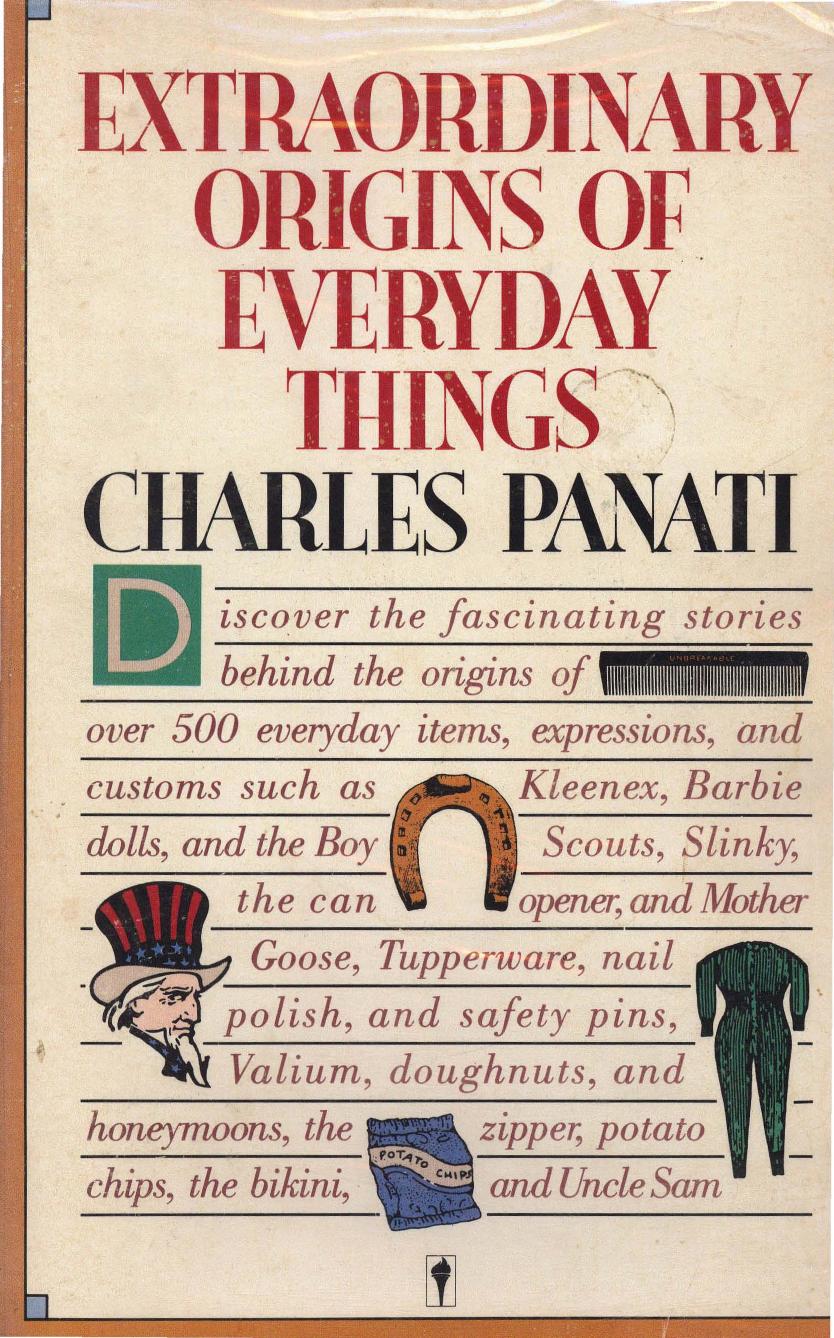Extraordinary Origins of Everyday Things by Charles Panati

Author:Charles Panati
Language: eng
Format: epub, mobi, pdf
Publisher: HarperCollins
Published: 2012-09-04T04:00:00+00:00
Hair Dryer: 1920, Wisconsin
The modern electric hair dryer was the offspring of two unrelated inventions, the vacuum cleaner and the blender. Its point of origin is well known: Racine, Wisconsin. And two of the first models—named the “Race” and the “Cyclone” —appeared in 1920, both manufactured by Wisconsin firms, the Racine Universal Motor Company and Hamilton Beach.
The idea of blow-drying hair originated in early vacuum cleaner advertisements.
In the first decade of this century, it was customary to promote several functions for a single appliance, especially an electrical appliance, since electricity was being touted as history’s supreme workhorse. The stratagem increased sales; and people had come to expect multifunction gadgets.
The vacuum cleaner was no exception. An early advertisement for the so-called Pneumatic Cleaner illustrated a woman seated at her vanity, drying her hair with a hose connected to the vacuum’s exhaust. With a why-waste-hot-air philosophy, the caption assured readers that while the front end of the machine sucked up and safely trapped dirt, the back end generated a “current of pure, fresh air from the exhaust.” Although early vacuum cleaners sold moderately well, no one knows how many women or men got the most out of their appliance.
The idea of blow-drying hair had been hatched, though. What delayed development of a hand-held electric hair dryer was the absence of a small, efficient, low-powered motor, known technically among inventors as a “fractional horsepower motor.”
Enter the blender.
Racine, Wisconsin, is also the hometown of the first electric milk shake mixer and blender. (See page 111.) Although a blender would not be patented until 1922, efforts to perfect a fractional horsepower motor to run it had been under way for more than a decade, particularly by the Racine Universal Motor Company and Hamilton Beach.
Thus, in principle, the hot-air exhaust of the vacuum cleaner was married to the compact motor of the blender to produce the modern hair dryer, manufactured in Racine. Cumbersome, energy-inefficient, comparatively heavy, and frequently overheating, the early hand-held dryer was, nonetheless, more convenient for styling hair than the vacuum cleaner, and it set the trend for decades to come.
Improvements in the ’30s and ’40s involved variable temperature settings and speeds. The first significant variation in portable home dryers appeared in Sears, Roebuck’s 1951 fall—winter catalogue. The device, selling for $12.95, consisted of a hand-held dryer and a pink plastic bonnet that connected directly to the blower and fitted over the woman’s head.
Hair dryers were popular with women from the year they debuted. But it was only in the late 1960s, when men began to experience the difficulty of drying and styling long hair, that the market for dryers rapidly expanded.
Download
Extraordinary Origins of Everyday Things by Charles Panati.mobi
Extraordinary Origins of Everyday Things by Charles Panati.pdf
This site does not store any files on its server. We only index and link to content provided by other sites. Please contact the content providers to delete copyright contents if any and email us, we'll remove relevant links or contents immediately.
| Coloring Books for Grown-Ups | Humor |
| Movies | Performing Arts |
| Pop Culture | Puzzles & Games |
| Radio | Sheet Music & Scores |
| Television | Trivia & Fun Facts |
The Infinite Retina by Robert Scoble Irena Cronin(5823)
Harry Potter and the Cursed Child: The Journey by Harry Potter Theatrical Productions(4386)
The Sports Rules Book by Human Kinetics(4200)
Molly's Game: From Hollywood's Elite to Wall Street's Billionaire Boys Club, My High-Stakes Adventure in the World of Underground Poker by Molly Bloom(3431)
A Knight of the Seven Kingdoms by George R R Martin(3132)
Quidditch Through the Ages by J.K. Rowling(3024)
How To by Randall Munroe(2956)
Quidditch Through the Ages by J K Rowling & Kennilworthy Whisp(2891)
Flowers For Algernon by Daniel Keyes(2799)
Quidditch Through the Ages by Kennilworthy Whisp by J.K. Rowling(2770)
Stacked Decks by The Rotenberg Collection(2762)
Quidditch through the Ages by J. K. Rowling(2727)
Quidditch Through The Ages by J. K. Rowling(2693)
776 Stupidest Things Ever Said by Ross Petras(2641)
Ready Player One: A Novel by Ernest Cline(2602)
What If?: Serious Scientific Answers to Absurd Hypothetical Questions by Randall Munroe(2576)
Beautiful Oblivion by Jamie McGuire(2502)
The Book of Questions: Revised and Updated by Gregory Stock Ph.d(2471)
Champions of Illusion by Susana Martinez-Conde & Stephen Macknik(2346)
